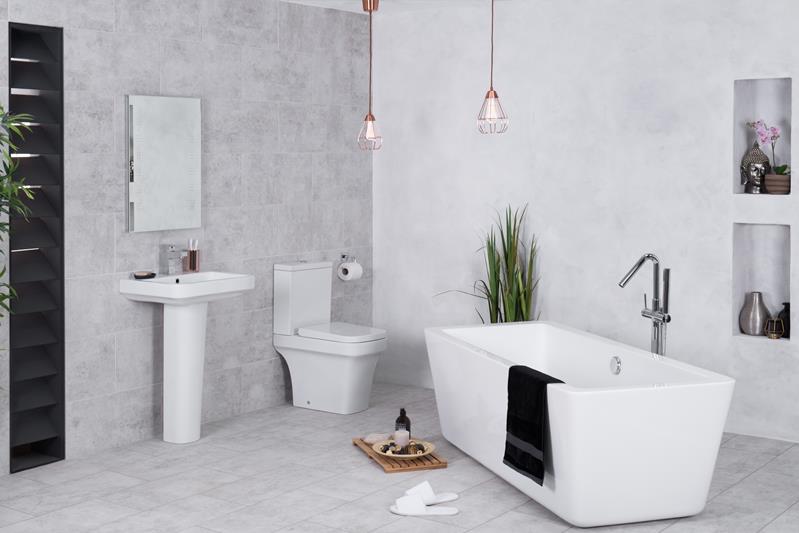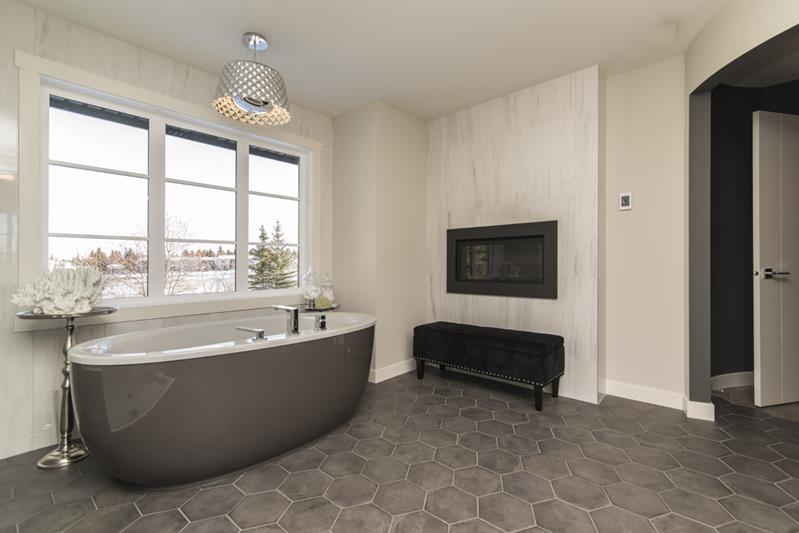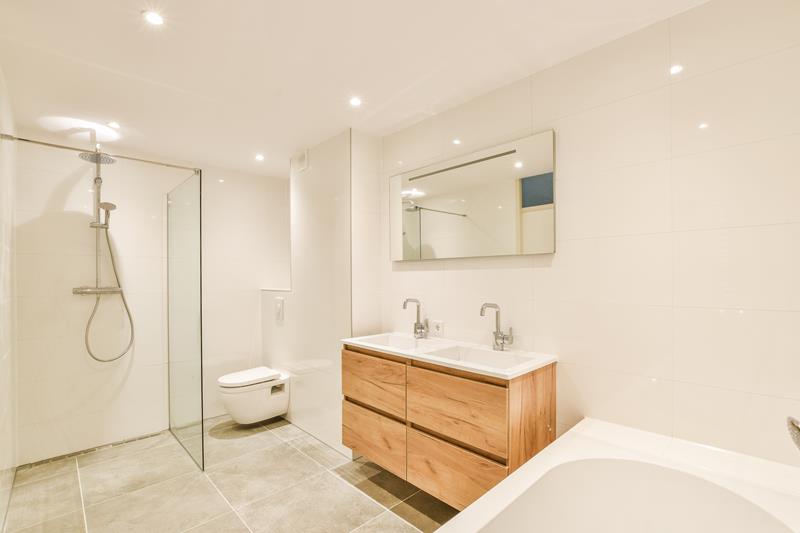Bathroom Lighting
The bathroom requires good background lighting. Therefore, it is worth giving preference to lamps suitable for damp and humid conditions, as well as having the appropriate degree of protection. Also, pay attention to the color of the walls and tiles. Typically, dark-colored areas absorb light and require fixtures with much higher light intensity levels.
Indirect light reflected from light-colored walls and ceilings makes small bathrooms appear larger. Additional wall lights, for example, in niches, will also help to visually enlarge the space. The effect is even better than thanks to large windows and mirrors.
How to properly plan lighting in the bathroom
Planning bathroom lighting zones always starts with the sink, which usually has a mirror above it. If the space is small, then just lighting the washbasin and mirror may be enough. And it is important to understand that the light above the sink is primarily intended to illuminate the person looking at his reflection.
The requirements for good lighting in this area can be reduced to three statements:
- The face should be very well lit. No shadows should fall on it.
- The light should not blind.
- The face should be seen in natural neutral shades.
When properly lit, light sources are located on both sides of the mirror and spread soft light as widely as possible. If for some reason it is impossible to install wall lamps, then another option could be a point of light above the mirror, and it should be soft and very wide. Linear luminaires with frosted white glass diffusers and high color rendering index light sources are well suited for creating lighting that looks as natural as possible.
To illuminate the area above the sink, it is better to use a bathroom lighting mirror with two vertical sconces. This arrangement prevents disturbing shadows from appearing and does not create the effect of being blinded when a person looks at his reflection.
Additional light from above is especially good for wide mirrors and also helps remove shadows from the face. Light only from above will create unwanted shadows on the chin and under the nose.
If only the ceiling can be used to place lighting fixtures, then the lamp should be located above the center of the sink, so the light will evenly illuminate the face. And here again, the rule about a wide and soft distribution of the light flux is applicable, since there is a possibility of reflected light from the walls surrounding the mirror.

How to use a downlight lamp
A downlight lamp placed above a mirror can create a dramatic-looking backlight but rarely provides quality light in this area. If there are no other options other than installing a bathroom recessed lighting, then it is preferable to use models with diffuse opal glass. It is better to use two copies of the lamp, one on each side of the sink, rather than one located directly in the center.
Above the bathroom itself, a popular lighting solution is to install a pair of downlights in the ceiling directly above the drain. You should be careful with this option, as it may not be particularly comfortable for those who prefer to take long baths in peace. It is also not suitable for those who like to read in the bath.
An alternative is to install light sources above the “head” end of the bath. In this case, the lamp can be either on the ceiling or on the wall above your head.
If there is a shower stall instead of a bathtub, then it may also need its lighting. Most shower stalls are not very spacious, so a bathroom downlight recessed into the ceiling is a popular solution. However, it is worth ensuring that it does not interfere with the shower head, which is often mounted nearby.




